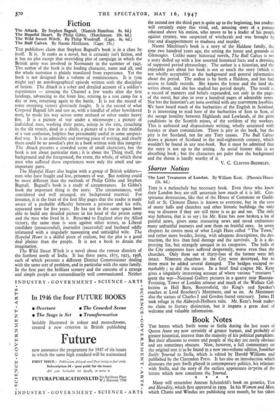Shorter Notices
Tins is a melancholy but necessary book. Even those who know their London best are still uncertain how much of it is left. Con- spicuous destruction, like that of the House of Commons or Guild- hall or St. Clement Danes is known to everyone, but in the case of many halls and churches and other historic Cuildings the only way to discover if they are still there is to go and see. The only way hitherto, that is to say ; for Mr. Kent has now broken a lot of painful news, given some reassuring news and saved enthusiasts many unfruitful journeys and sent them on fruitful ones. In seven chapters he covers most of what Leigh Hunt called " The Town," and rather more besides, listing, with- adequate descriptions, the des- truction, the less than fatal damage and the survivals. It is a de- pressing list, but strangely unequal in its categories. The halls of the City companies have suffered desperately, worse even than the churches. Only three out of thirty-four of the former were left intact. Nineteen churches in the City were destroyed, but to them must be added several damaged. The bridges escaped re- markably ; so did the statues. In a brief final caapter Mr. Kent gives a singularly interesting account of where various " treasures " spent the war—National Gallery pictures in a quarry near Blaenau- Festiniog, Tower of London armour and much of the Wallace Col- lection at Hall Barn, Beaconsfield, the King's and Speaker's coaches at Lord Rosebery's Mentmore,. and so on. At Mentmore also the statues of Charles I and Gordon found sanctuary. James II took refuge in the Aldwych-Holborn tube. Mr. Kent's book makes no claim to literary distinction, but it imparts a great deal of welcome and valuable information.


































 Previous page
Previous page